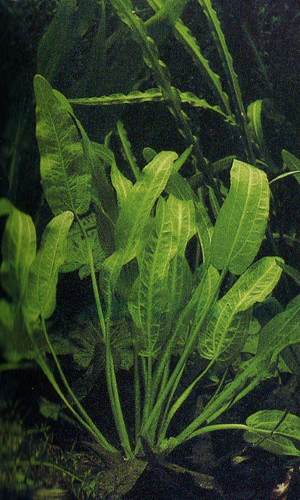Aw shucks. That plants.usda.gov list is certainly my favorite. It's complete and free to access, so it's my go-to for plant lists. The problem is that it's overwhelming. It's got like thousands of plants listed and only a small fraction of them are aquatic. To help you narrow it down a bit, you could scan through some books on aquatic plants and then reference that full state list to see if any known aquatic plants are native to your state. That's probably faster than clicking on each of those thousand names one by one to see if they're aquatic. As far as where to get a list of aquatic plants, it's likely that your library may be able to borrow or inter-library loan (ILL) some of the following books for you. Note: I wouldn't buy them; they're often $50+ and of limited application to your region. But yeah, if your library can get one or two for free, you might as well ask about it. The local library near me will take about two weeks to a month, but it'll borrow the book from a library somewhere in the state or now I think their network is nationwide in some places.
List of books worth looking into if free to find aquatic plants to then search for on the list of your state's native species:
- Wetland Plants of the Northern Great Plains: A complete guide to the wetland and aquatic plants of North and South Dakota, Nebraska, eastern Montana and eastern Wyoming by Steve W Chadde
- Aquatic Plants of the Upper Midwest: a photographic field guide to our underwater forests by Paul M. Skawinski
- A Field Guide to the National Wetland Plant List: Wetland Ratings for Plants of the United States by Steve W Chadde
- Wetland Plants of Wisconsin: A complete guide to the wetland and aquatic plants of the Badger state by Steve W Chadde
- Wetland Plants of Michigan by Steve W Chadde
- Field Guide to the Aquatic Plants of Lake George by Eugene C. Ogden
- A Field Guide to Common Aquatic Plants of Pennsylvania by Dana Rizzo
- Aquatic and Wetland Plants of Northeastern North America : Volume 1 and Volume 2 by Garrett E. Crow; C. Barre Hellquist
- A Field Guide to the Common Wetland Plants of Western Washington & Northwestern Oregon by Sarah S. Cooke
- A Great Lakes Wetland Flora by Steve W. Chadde
Then you've got your freebie guides, which may or may not be good but all are readily available.
And at this point all the other NANFA members are gonna hate on me because I'm googling stuff, so I'll stop. You get the idea; there's no reason to limit yourself to vallisneria or resign yourself to annually purchasing tropical species that aren't going to overwinter. There are lots of native plants that will overwinter well for you. To get you started, egeria/elodea, crinum, ceratophyllum, sagittaria, cabomba, bacopa, najas, ludwigia, vallisneria, echinodorus, chara, potamogeton, and myriophyllum are all genus names with aquatic plant species. Keep an eye out for these genus names on the usda complete list of plants found in your state, as those genus contain some but not all aquatic species. *nods*
I wish there was a comprehensive guide to Iowa's aquatic plants, but if there is one I'm not seeing it. Maybe you could make a list, given the usda.gov list and learning more about which species are aquatic. That would be helpful. You could post it here, like, "Iowa's aquatic plants" and then a big list.
















